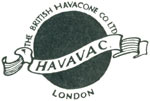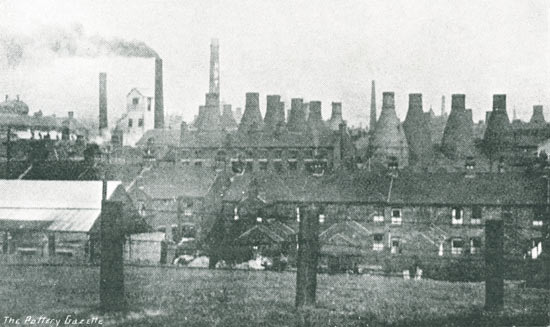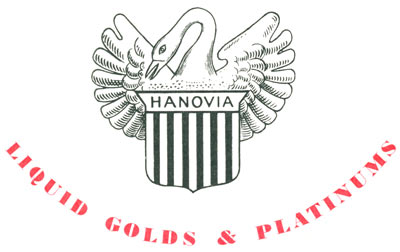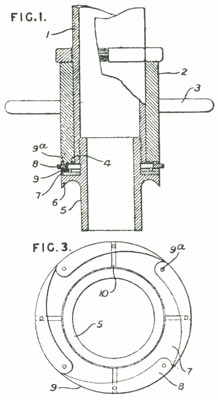Contract Notes
Contract Open
Sunderland R.D.C. invite tenders for their Isolation Hospital, Hylton-rd., for crockery. Particulars as to quantities may be obtained from the Clerk and samples of the various articles seen on application to the Matron of the Institution. Tenders to Mr. J. C. Wilson, clerk, 17, John-st., Sunderland, by noon on Aug. 12.
Tenders Accepted
Air Ministry. — Glasses, clear and orange: Chance Bros. & Co., Ltd., Smethwick.
Manchester Electricity Committee. — Gauge glasses: S. & C. Bishop & Co., Ltd., St. Helens.
Post Office. — Ducts: Albion Clay Co., Ltd., Bur-ton-on-Trent; Donnington Sanitary Pipe and Firebrick Co., Burton-on-Trent.
Salford T.C. — Crockery to various institutions: The Grindley Hotel Ware Co., Ltd., Tunstall, Stoke-on-Trent, £193 (recommended).
Central Purchasing Committee. — Glass: Baxen-dale and Co., Ltd., and S. Gratrix, Junr. and Bro., Ltd.; Pilkington Bros., Ltd., St. Helens.
Post Office. — Glass boxes: Pilkington Bros., Ltd., St. Helens. Insulators: Joseph Bourne & Sons, Ltd., Denby; Bullers, Ltd., Milton, Staffs; Thomas De La Rue & Co., Ltd., London, E.; Doulton & Co., Ltd., Stoke-on-Trent; Litholite Insulators & St. Albans Mouldings, Ltd., Watford. Jars, Leclanche: Forster’s Glass Co., Ltd., St. Helens.
New Trade Marks
Albanite. — 560,486. China clay. Class 4. English Clays. Lovering Pochin & Co., Ltd., 14, High Cross-st., St. Austell, Cornwall.
 557,022. Porcelain and earthenware. Class 6. The Great Universal Stores, Ltd., Devonshire-st., Ardwick, Manchester. To be Associated with No. 557,021. (By Consent.) 557,022. Porcelain and earthenware. Class 6. The Great Universal Stores, Ltd., Devonshire-st., Ardwick, Manchester. To be Associated with No. 557,021. (By Consent.)
Miroclare. — 560,144. Glass. Class 15. Glass & Glazing, Ltd., “Arundel House,” Liverpool-gdns., Worthing, Sussex.
 560,044. Vacuum flasks made principally of glass. Class 15. The British Havacone Co., Ltd., River Plate-ho., 10-11, Finsbury-circus, E.C.2. Batco. — 559,197. Tiles (earthenware). Class 16. British Art Tile Co., Ltd., Market-pl., Whittlesey, nr. Peterborough. 560,044. Vacuum flasks made principally of glass. Class 15. The British Havacone Co., Ltd., River Plate-ho., 10-11, Finsbury-circus, E.C.2. Batco. — 559,197. Tiles (earthenware). Class 16. British Art Tile Co., Ltd., Market-pl., Whittlesey, nr. Peterborough.
Glasil. — 558,962. Spun glass. Class 15. Chance Brothers & Co., Ltd., Glass Works, West Smethwick, nr. Birmingham.
Transpero. — 560,948. Electrical lighting glassware. Class 15. The Wholesale Fittings Co., Ltd., 23, 25, 27 and 37, Commercial-st., E.1.
The Gazette
The Lists are taken from the Official Gazette information and we are not responsible for the mis-spelling of the names of any of the creditors — Eds. P.G. & G.T.R.
Limited Companies; Appointment of Receivers; Resolutions and Notices as to Winding Up; Petitions; Orders; and Official and Other Notices
Bamborough Manufacturing Co., Ltd. (old co.), London, W., mirror and glassware mfrs. — E. C. Collins ceased to act as recr. July 17.
British White Flint Glass, Ltd., London, N. — J. A. Plumpton, Tudor-chbrs., Station-rd., Wood Green, apptd. recr. June 26.
Glass Products, Ltd., Salford. — Miss J. Stockton, Round-ho., Adlington, apptd. recr. July 9.
Kilner Bros., Ltd., London, N., glass bottle mfrs. — P. C. Cooper Parry, 102, Friar Gate, Derby, apptd. recr. July 5.
Wheal Anna Clay Mining Co., Ltd. (Members’ Voluntary Winding-up). — Resolved, June 12: That the Company be wound up voluntarily. Mr. J. & W. Shaffery, St. Austell, liqr. Claims by Aug. 12 to liqr.
Extracts from the Registry of Deeds of Arrangement
The following Deeds of Arrangement with Creditors have been filed under the Deeds of Arrangement Act, 19.14. Under this Act, it is necessary that private arrangements other than those executed in pursuance of the Bankruptcy Act shall be registered within seven clear days after the first execution by any debtor or any creditor.
* These figures are taken from the affidavit filed with the Registered Deed, but may be subject to variation on realisation. In some cases the estimated assets are not stated.
Meigh, Harry Rembrandt, Caverswall-rd., Weston Coyney and Ernest Edwin Spanton Reid, Selwyn, Weston-rd., Meir, tdg. at High-st., Long-ton, as Doric China Co., china mfrs. (said E. E. S. Reid also carries on business at The Iron-market, Newcastle-under-Lvme, as Louis, glass and china dlr.). Tr., R, E. Clark, 17, Albion-st., Hanley. Date, June 13. Filed, June 18. Liabilities unsecured, £3,395. Assets less secured claims, £1,718. Separate estate of E. E. S. Reid. Liabilities unsecured, £567. Assets less secured claims, £212.
Mitchell, Wm. Alfd. Norman, tdg. as Liverpool China Stores, 67, Wavertree-rd., and 177, Smith-down-rd., Liverpool, and residing at 105, Dunbabin-rd., Wavertree, glass, china and gen. dlr. Tr., F. L. Williams, 11, Victoria-st., Liverpool. Date, July 3. Filed, July 10. Lialibities unsecured, £1,061. Assets less secured claims, £208. Secured crs., £1,817. The following are among the creds. : Barlows (Longton), Ltd., Longton, £50; Broadhurst James & Sons, Ltd., Fenton, £11; Barkers & Kent, Ltd., Fenton, £11; Colclough, Herbert J., Stoke-on-Trent, £40; Clough, Alfred, Ltd., Stoke-on-Trent, £13; Ellgreave Pottery Co., Ltd., Burslem, £10; Hughes, Thos. & Son. Ltd., Longport, £15; Johnsen & Jorgensen Flint Glass, Ltd., London, £63; Kensington Pottery,
|



 557,022. Porcelain and earthenware. Class 6. The Great Universal Stores, Ltd., Devonshire-st., Ardwick, Manchester. To be Associated with No. 557,021. (By Consent.)
557,022. Porcelain and earthenware. Class 6. The Great Universal Stores, Ltd., Devonshire-st., Ardwick, Manchester. To be Associated with No. 557,021. (By Consent.)
 560,044. Vacuum flasks made principally of glass. Class 15. The British Havacone Co., Ltd., River Plate-ho., 10-11, Finsbury-circus, E.C.2. Batco. — 559,197. Tiles (earthenware). Class 16. British Art Tile Co., Ltd., Market-pl., Whittlesey, nr. Peterborough.
560,044. Vacuum flasks made principally of glass. Class 15. The British Havacone Co., Ltd., River Plate-ho., 10-11, Finsbury-circus, E.C.2. Batco. — 559,197. Tiles (earthenware). Class 16. British Art Tile Co., Ltd., Market-pl., Whittlesey, nr. Peterborough.



